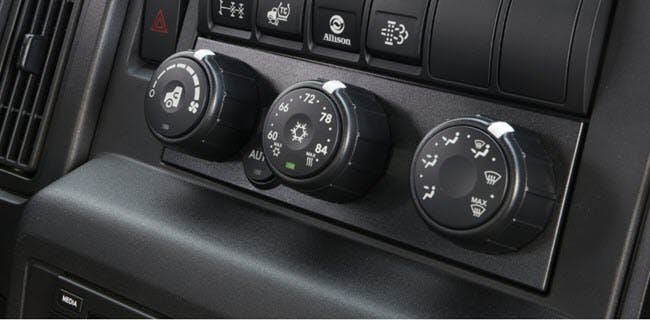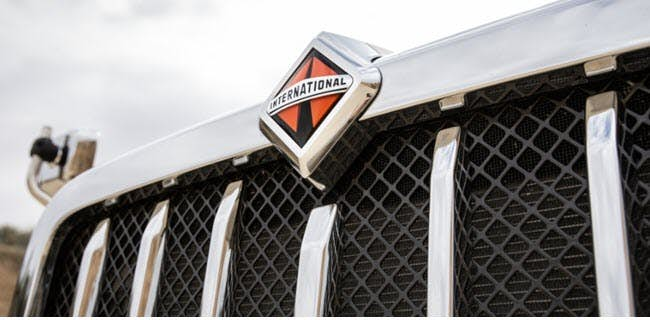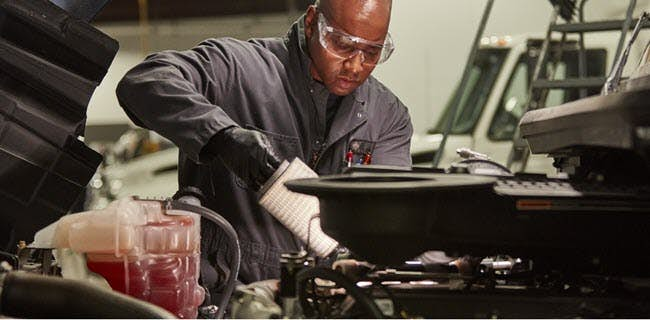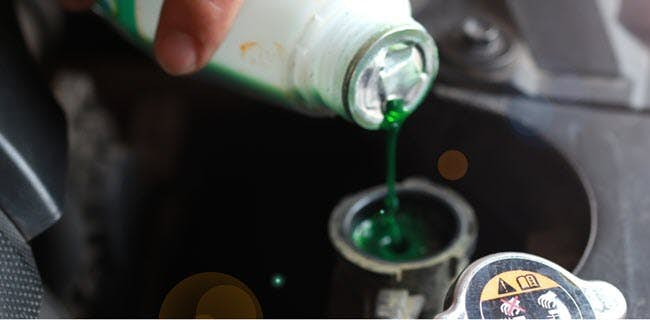HOW TO PREPARE YOUR TRUCK FOR WARMER WEATHER

The sun is beaming, the pavement sizzling. How will thousands of pounds of moving metal handle all that heat? From inside the cabin to the rubber hitting the road, it’s important to ensure your truck operates efficiently and reliably with as little uptime maintenance as possible. If not addressed, the increased strain your truck will take on during the warmer months will add up and could leave you with bigger challenges down the road. With hundreds of service locations spread out across the country, International® Truck and our truck maintenance service partners are always nearby to help you manage it all.
10 KEY PREVENTATIVE MAINTENANCE ITEMS TO CONSIDER BEFORE DRIVING IN WARMER WEATHER CONDITIONS

Your fluids must be suitable for higher temperatures. By including the right fluid, the engine stays properly lubricated and protected, helping your truck run more efficiently. Be sure to follow your manufacturer’s specific recommendations when doing uptime fleet maintenance or truck maintenance on your personal rig.

Tires are drastically affected by different conditions over time and must be checked regularly. Not checking for things such as tire pressure and tread depth can lead to reduced traction, uneven wear and even blowouts. Routinely checking and adjusting tire pressure should be a standard practice when servicing your trucks(s) and can significantly improve uptime.

You survived winter, but did your braking system? Winter road conditions can leave a lasting impact on your truck - especially the air brakes. The freeze-thaw cycles can cause metals to expand and contract, plastics can soften and harden and steel air tanks can corrode or develop small punctures. One sign that your air brake system may be damaged and leaking air is if it’s taking significantly longer to charge the tanks or if the system is charging more often. When servicing trucks, a close visual inspection can help ensure your air brakes are up to the task.

Be less prone to fatigue and focus more on the road ahead with cool cabin temperatures. The warmer it gets, the harder the AC needs to work. Checking and maintaining your AC system can help ensure coolant is at the right level and condition. Replace the cabin air filter and clean the evaporator and heater core. Check operation of mode doors, temperature blend doors, and fan operation. And run a system performance check, to ensure the system is operating at maximum efficiency.

Yes, cleaning is another key part of preventative maintenance. Get your truck ready for warm weather by washing off salt and other road debris left over from the winter months. Salt, especially, can take a toll on the metal components of your truck, so it’s important to use a high-pressure water hose and specialized soap to thoroughly clean the underside of the truck.

Your battery provides the power required to start your engine and to run the lights, radio and other important electrical accessories that you use on a regular basis. Batteries can be adversely affected by both the extreme cold of winter and the blistering heat of summer. Regular checks of the battery should be a part of any vehicle maintenance checklist to help keep potential issues at bay.

As the temperatures go up, air circulation is more important than ever to help keep things cool. Be sure to check all air filters and replace as needed.

Another item to check to make sure your truck is ready for summer is the windshield. The additional road debris faced during the winter months may have left chips or cracks. A quick inspection during a vehicle maintenance checklist should be performed and damage should be repaired or the windshield replaced to provide a clear view throughout the long days of summer.

The sun during warmer weather months can also be tough on your wiper blades. If your blades are nearing replacement time, it might be best to take care of it now before they degrade further (and faster) during the summer.

Check and clean the vehicle cooling package including: radiator, charge air cooler, AC condenser and transmission cooler if equipped. Dirt, debris, and damaged fins reduce the performance of the cooling system, and in the hot summer weather, the cooling package needs to operate at peak performance. Clean the cooling package, repair damaged cooling fins, and replace components if they cannot be repaired to optimum efficiency. Check fan blade condition, fan drive operation, and also the fan shroud for any damage or missing components. Pressure test the coolant reservoir cap, and the system to check for any “hot” leaks.





